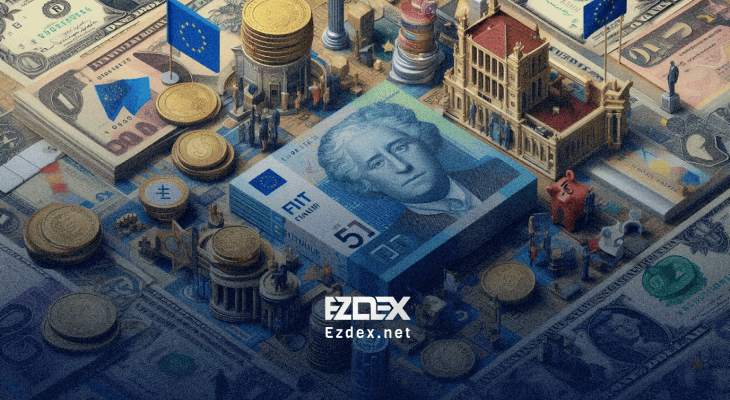What is Fiat Currency? A Comprehensive Guide

In today's global economy, the concept of money is central to everyday transactions, investments, and savings. Among the various forms of money, fiat currency stands out as the first and mostly used form. But what exactly is fiat currency, and why is it so important?
In this article, we will explore the definition, characteristics, history, and significance of fiat currency to help you understand its role in the financial world.
Table of Contents
Understanding Fiat Currency
Fiat currency is a type of currency that is issued by a government and has value because the government maintains it.
Unlike commodity money, which is backed by a physical good like gold or silver, fiat money's value comes solely from the trust and confidence of the people who use it. Fiat currency has value because the government decrees it.
Key Characteristics of Fiat Currency
- No Intrinsic Value: Fiat money does not have intrinsic value. Its worth is not based on physical commodities but rather on the public's faith in the stability and creditworthiness of the issuing government.
- Legal Tender: Fiat currency is recognized by the law as the official medium of payment within a country. This means it must be accepted as a means of settling debts and transactions.
- Inflation Risk: Because fiat money is not tied to a physical reserve, governments have the ability to print more currency at will. This can lead to inflation, where the value of money decreases over time as more currency circulates in the economy.
- Monetary Policy Tool: Central banks can control the supply of fiat money to influence the economy. By adjusting interest rates and conducting open market operations, they can manage economic growth, control inflation, and stabilize the currency.
💡Do you know that USDT price is backed by US Dollar and always equal to $1?
A Brief History of Fiat Currency
Fiat currency is not a modern invention; it has been used in various forms throughout history.
One of the earliest known uses was in China during the 11th century. The Song Dynasty issued the first paper money, which was not backed by a physical commodity but was accepted as a means of payment due to government decree.
In the Western world, the shift to fiat money became more prominent in the 20th century. Before this, most currencies were backed by gold or silver.
Today, nearly all countries use fiat money, with the U.S. dollar, Euro, and Japanese yen being some of the most widely recognized examples.

The Importance of Fiat Currency in Modern Economies
Fiat currency plays a crucial role in the global economy. It provides governments with the flexibility to manage their economies, allowing them to respond to financial crises, economic recessions, and other challenges. Here are some reasons why fiat currency is so important:
- Economic Stability: By controlling the money supply, central banks can mitigate the effects of inflation and deflation, helping to maintain economic stability.
- Ease of Use: Fiat currency is more convenient than commodity-based money. It is easier to carry, store, and transfer electronically, which facilitates trade and commerce.
- Support for Economic Growth: Fiat money allows governments to implement monetary policies that can stimulate economic growth. For example, lowering interest rates can encourage borrowing and investment, leading to job creation and higher productivity.
- Global Trade: Fiat currencies are used in international trade, with exchange rates determining the value between different currencies. The stability of a country's fiat currency can influence its trade relationships and economic power on the global stage.
Challenges and Criticisms of Fiat Currency
Despite its widespread use, fiat currency is not without its criticisms. Some of the most common challenges include:
- Inflation: Excessive printing of fiat money can lead to hyperinflation, where the value of the currency plummets, causing prices to skyrocket. Historical examples include Zimbabwe in the 2000s and Germany in the 1920s.
- Debt: Fiat money systems can lead to excessive national debt as governments borrow and spend beyond their means, relying on future income to pay off the debt.
- Loss of Value: Over time, the purchasing power of fiat currency can decline due to inflation. This is why many investors seek to diversify their portfolios with assets like gold, real estate, or cryptocurrencies, which are seen as hedges against currency devaluation.
The Future of Fiat Currency
The future of fiat currency is a topic of ongoing debate. With the rise of buying and selling cryptocurrencies like Bitcoin and the development of central bank digital currencies (CBDCs), the financial landscape is evolving.
However, for now, fiat currency remains the dominant form of money worldwide, supported by the trust and authority of governments. Fiat currency is the backbone of the modern financial system. Its value is derived from the trust people place in their governments. While it offers significant advantages in terms of economic stability and ease of use, it also comes with risks such as inflation and loss of value over time.
Read the latest news and announcements in this section.
Read the latest tutorials about payment service providers in this section.
You can access full guides and tutorial to use EZDEX services in this section.
Step by step tutorials and photo guides are available in this section.
Access the latest information about financial and economical matters in Turkey in this section.
Access the latest information about financial and economical matters in UAE in this section.
Explore expert guides, tips, and strategies for understanding and working with gold. Learn everything from basics to advanced knowledge.